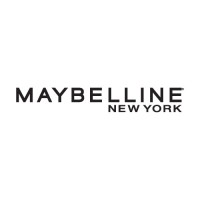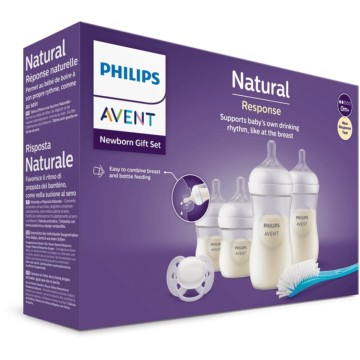Breastfeeding is one of the most natural and beneficial ways to feed an infant. Yes, it can be demanding and time-consuming, but the benefits to both mother and baby are incomparable. In this guide, we will introduce you to everything you need to know about breastfeeding.
1. Why Breastfeed Your Baby?
Breastfeeding is something that not only strengthens the relationship between mother and child, but also offers a number of health benefits for the baby. Breast milk is
rich in nutrients which are specially adapted to the needs of the newborn and help it to develop and protect itself from diseases.
2. Advantages of Breastfeeding
Scientists and doctors agree that breast milk is best for babies, and there are many reasons:
- Protection from diseases: Breast milk contains antibodies that help the baby fight infections, as well as other ingredients that promote the development of a healthy gallbladder.
- Strengthening the relationship between mother and child: Breastfeeding is a moment that mother and child share intimately, creating a strong emotional connection.
- Economy: Breast milk is free, while bottles and formula can cost quite a bit.
- Convenience: Breast milk is always available and at the right temperature.
- Helps in weight loss after pregnancy: Breastfeeding burns extra calories, helping mothers lose pregnancy weight faster.
3. Nutrition during Breastfeeding
Breastfeeding mothers should pay attention to their diet. During the breastfeeding period, the woman needs more calories and an increase in the intake of some
Nutrients, such as vitamins A, C and D, thiamin, riboflavin, niacin, vitamin B6, vitamin B12, choline, folate, calcium, phosphorus, magnesium, iodine, zinc, iron and selenium.
4. What is the Right Position for Breastfeeding?
There are many positions a mother can use for breastfeeding. The correct position is the one that is most comfortable for mother and baby and allows a good reception of the breast. Some of the more popular positions include:
Classic Breastfeeding Position
- Place the baby at the level of your chest (no chest lift required).
- Hold the baby close to your body, supporting it with your arm. Rest your hands on pillows for more stability.
- Adjust the baby's body so that the nipple is in contact with the baby's nose.
- Bring the baby's hips towards your body.
- Wait until the baby leans over and reaches the nipple.
- Move the baby away from the breast, starting from the neck, then the shoulders and hips. The baby's chin will be tucked into the breast, with his nose away from the nipple.
- Avoid pulling the baby to the breast by pulling on its head. This can cover the baby's nose and affect his breathing.
Breastfeeding Cross Position
- Hold your baby in your arms, with his head in your right hand (to facilitate the connection to your left breast).
- Support the baby with your right arm, and hug the baby's hips close to you using your right arm.
- Shape your left breast with your left hand.
- Place your nipple against the baby's lips so he can take it.
- Gently lift the nipple towards the baby's palate as the baby approaches.
- Once latched, baby's chin will be tucked into the breast and you can look into each other's eyes.
Lying Breastfeeding Position
- Lie on your side with a support pillow.
- Close to the chest, place the lower shoulder of the baby.
- Direct the baby "downhill" to the breast, clamping it to the nipple.
- The baby will have to lift its head to reach the nipple.
- If necessary, adjust the breast for a better fit, especially if it is large or the nipples are flat.
5. Problems and Solutions During Breastfeeding
Breastfeeding can be a challenge, especially for new mothers. From stretch marks to milk flow problems, the difficulties are many. Thus, it is important to know the solutions to the most common problems that a woman may face during breastfeeding. Some solutions for these problems can be found on our site
here
6. How Often Should You Breastfeed Your Baby?
Women often wonder how often they should breastfeed their baby. The answer depends on many factors, including
baby's ageOf
amount of milk produced by the mother and her
baby's ability to receive milk. For the most part, newborns should be fed
every 2-3 hours or 8-12 times a day.
7. Breastfeeding and Work
Returning to work after maternity leave can be a big challenge for nursing mothers. However, with the right preparation and support, it is possible to continue breastfeeding even when you return to work.
8. Artificial Nutrition or Breastfeeding?
While breastfeeding is the ideal option for feeding an infant, we understand that this option is not always possible or desirable for all mothers. Therefore, in this case too, artificial nutrition using formula can be an alternative solution, finding the right products
here
9. When to Stop Breastfeeding
The decision about when to stop breastfeeding is a personal one and should be made based on the needs and well-being of the mother and child. The recommendations of health organizations are that infants should be breastfed exclusively for themselves
first six months of their lives,
with continued breastfeeding until the age of two or for as long as the mother and child wish.
10. Tips for Successful Breastfeeding
Breastfeeding may seem like a natural process, but it takes practice and patience. Here are some tips that can help:
- Follow your baby's rhythm: Don't worry about sticking to a strict schedule. Breastfeed your baby whenever he seems hungry.
- Ensure proper download: Your baby should have the entire nipple in his mouth, as well as a large part of the breast. This will help prevent stretch marks.
- Do not extend the dimensions between feedings to increase milk production: Instead, breastfeed more often. Your breasts produce milk based on demand, so the longer you breastfeed your baby, the more milk you will produce.
11. Support during the Breastfeeding Period
It is important to remember that support is critical to breastfeeding success. Whether it comes from family, friends, a healthcare professional or a breastfeeding support group, don't hesitate to ask for help when you need it.
12. Additional Information
While breastfeeding is one of the most natural things in the world, it's not always easy. It's normal to face challenges and have questions. We hope this guide has given you some answers and helped you feel more comfortable with breastfeeding. Remember, every woman and every baby is different - do what's best for you and your baby.
PHARMACIST
BSc Pharmacy at the University of Nicosia,
MBA, Master of Business Administration
MSc, Formulation and Evaluation of Cosmetic Products




















